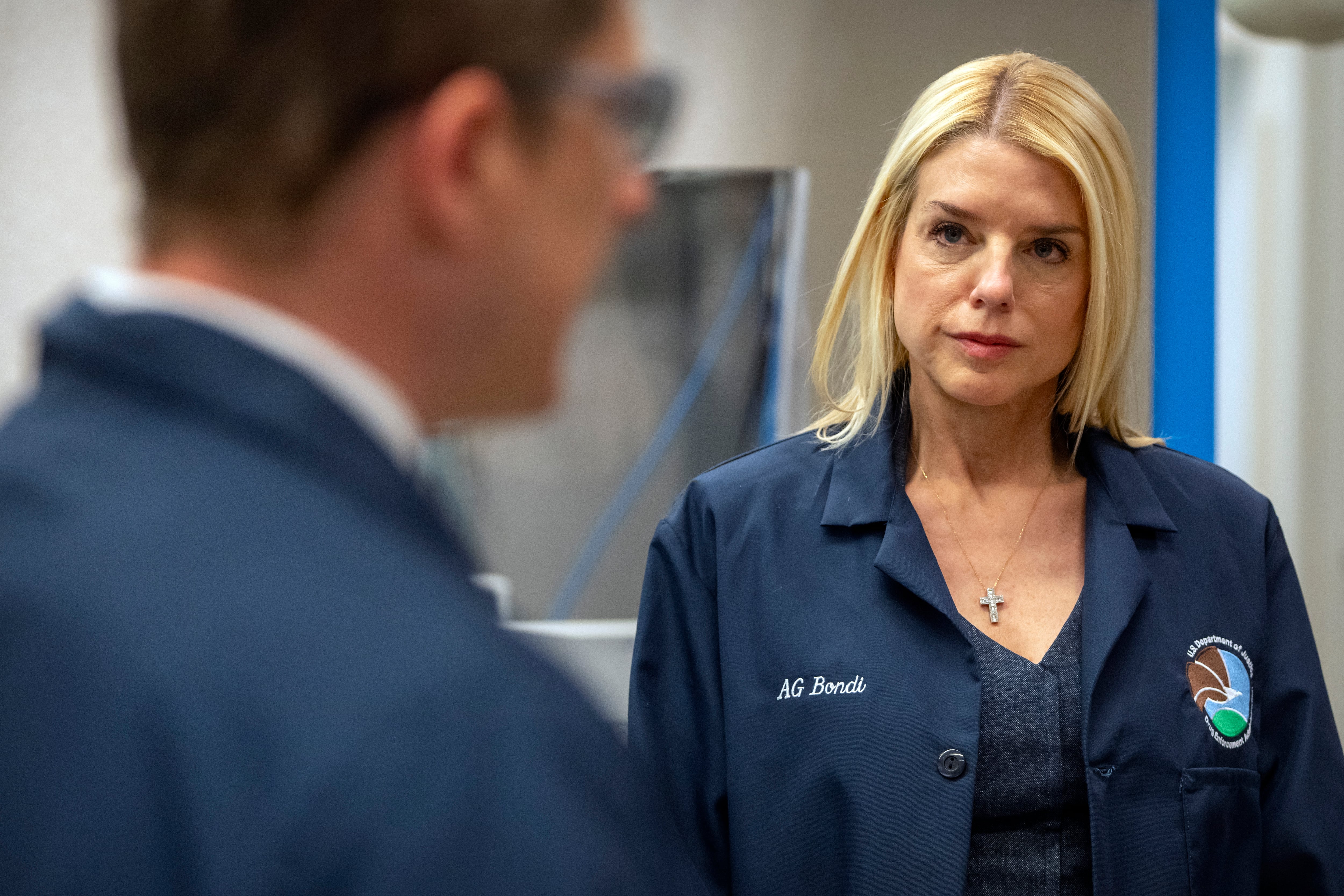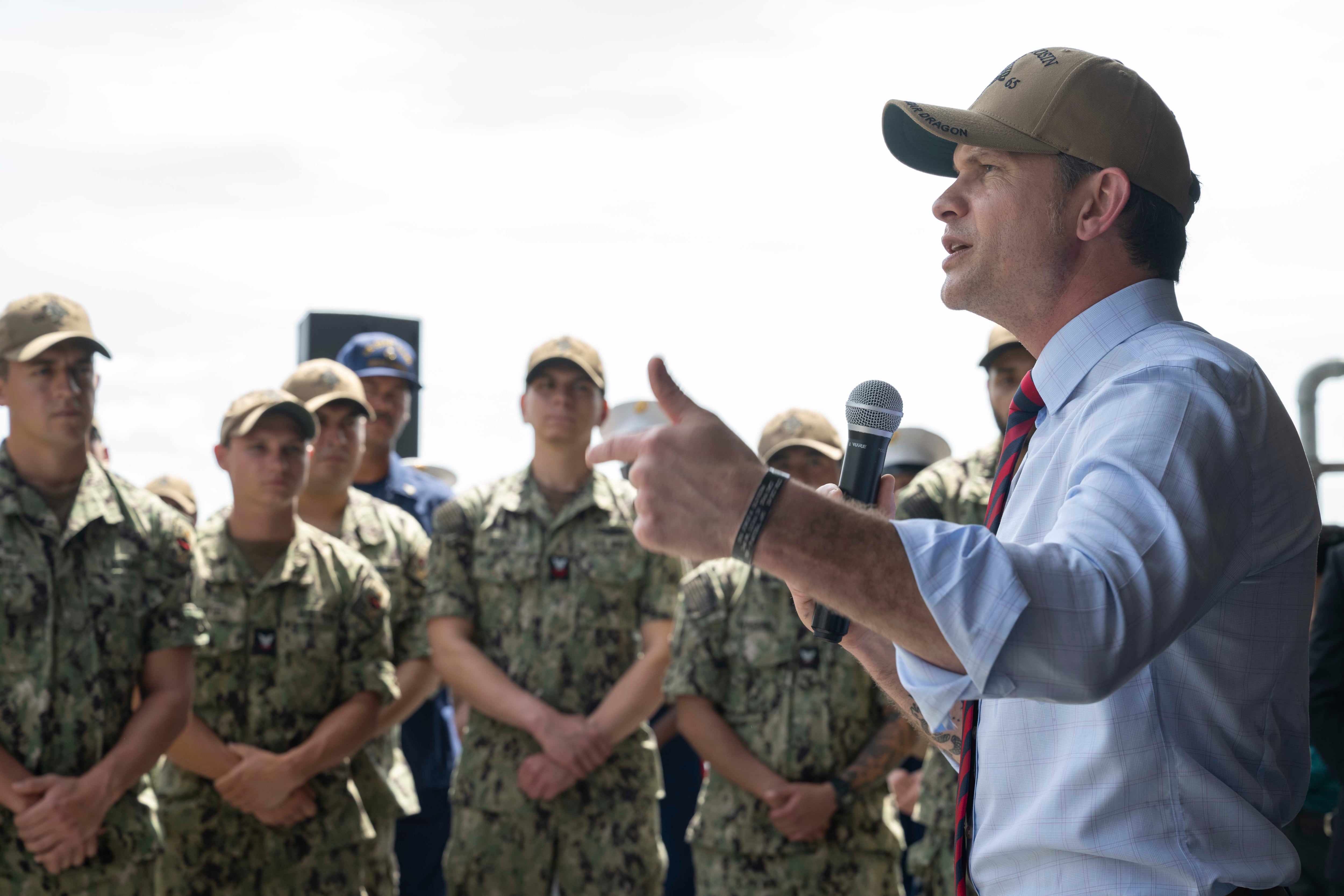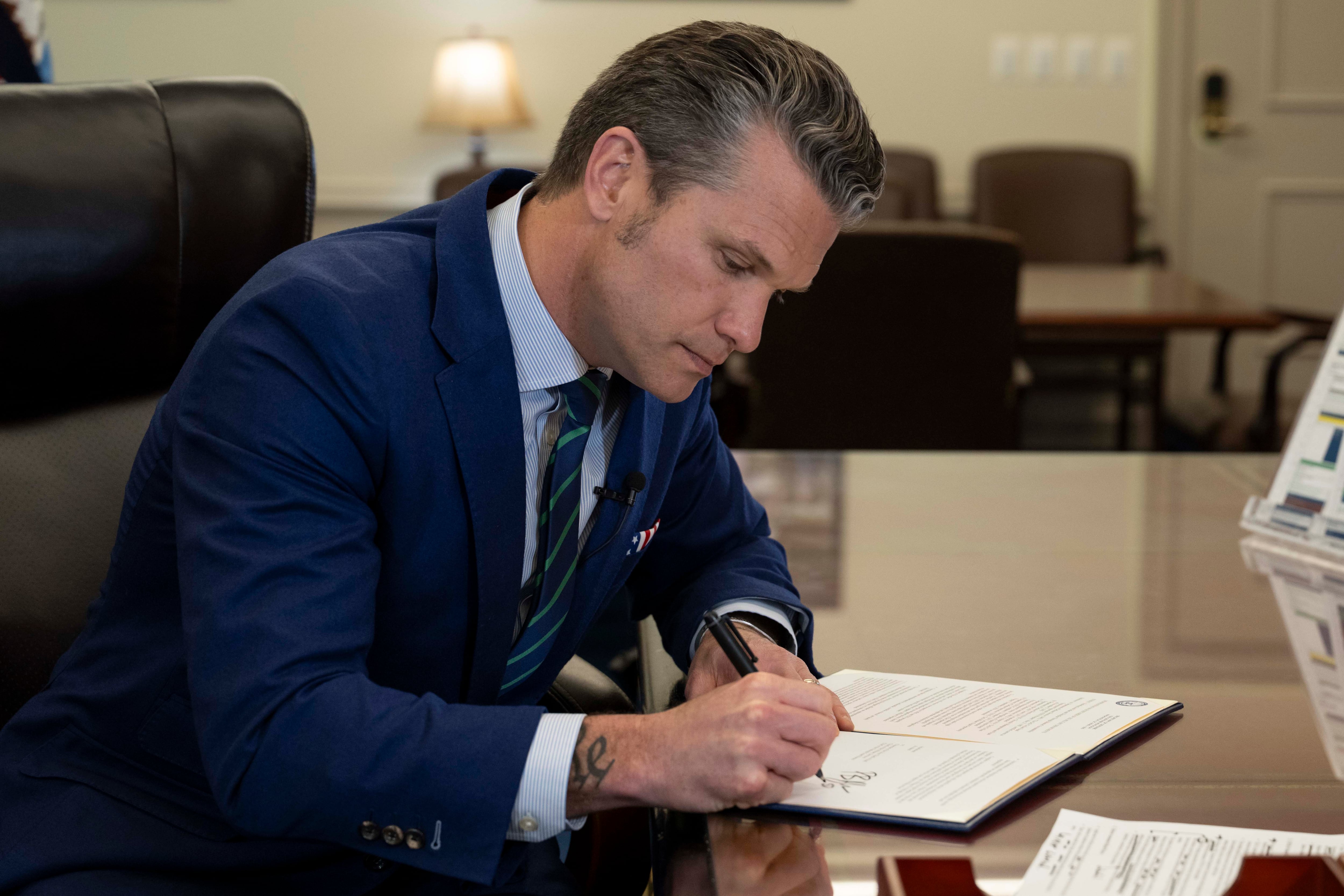Lt. Gen. David Mann, as the chief of U.S. Army Space and Missile Defense Command/Army Forces Strategic Command, must be prepared for a number of international threats: from the sky, in space and via the networks.
The three-star sat down with Army Times to discuss these threats, as well as his command's unique mission. Interview excerpts, edited for space and clarity:
Q. Can we talk a little bit about the global operations. Where soldiers are right now. Where are you looking to perhaps grow?
A. You know that we are putting the AN/TPY-2 radars. They are X-band radars that we put in various places around the world to help us with our missile defense operations. We have a radar in Israel. We have a radar in Turkey. We have radar in Qatar. We have two radars in Japan. They are primarily missile defense systems that provide the high fidelity data that we need to be able to prosecute a threat, now a missile — basically a ballistic missile.
In terms of adding capability, we are also putting into orbit, Wideband Global SATCOM, WGS, systems. They are satellites that provide that wideband support to the war fighter.
What we are doing is we have come up with a new capability that has a ten-fold increase in terms of providing the bandwidth support to the war fighter. We are completing that constellation. We are continuing to add birds to the constellation and satellites to the constellation up there to give us that increased wideband global satellite support capability.
I talked about the ground base interceptor operation that we do at Fort Greely and at Vandenberg Air Force Base. By the end of FY '17, working in concert with MDA [Missile Defense Agency], we're going to complete the third missile field up at Fort Greely that will give us 14 additional ground based interceptors, okay. That will bring up the total fleet from the 30 that we have right now up to a total of 44 by the end of '17.
Q. Why is that important?
A. Well, that is important because of the fact that capability is the only capability that the country has for protection against ICBMs, Intercontinental Ballistic Missiles emanating from North Korea or from Iran. We see what is going on in North Korea and their activities and the provocations that take place from time to time. Their technology development, their mobile ICBM technologies that they are continuing to develop. To ensure that we have the necessary protections in place, we are putting in 14 additional interceptors up there.
Q. We have spoken to a number of generals who when we asked who they feel the primary threat is right now, their answer is Russia. From a missile defense standpoint, is Russia still the primary threat? Or, what is your perspective on it?
A. The way you have to look at it from missile defense is near peer competitors, which Russia and China are versus non near-peer but from a missile defense perspective are probably more concerning. That is where I would say North Korea and Iran are the most concerning. Missile defense is a little unique in that regard. I would agree that I think the number one threat, or the greatest threat right now is Russia in terms of overall capabilities and just the tone of what you are seeing day to day from their leadership. But if you are going to call it down to specifically missile defense, I think that the irrational nature of what we are seeing in North Korea, and as well, Iran. Their focus on ballistic missiles is most troubling.
Q. What about other hot spots?
A. I would say China to a lesser degree. Where we are concerned about China is in terms of their development of anti-satellite capabilities in hypersonic or hyperglide technologies. The Chinese understand our reliance on space enabled capabilities. They are developing technologies, anti-satellite technologies. A couple of years ago, they demonstrated their capabilities to take out a satellite. I think it was a weather satellite. As a result, the destruction of that satellite put into orbit thousands of pieces of debris.
Q. Can you talk a little bit more about hypersonic and hyperglide technology?
A. What happens is it pulls different maneuvers that exhibit extreme G-forces. By using this technology, you are able to place a warhead basically anyplace in the world in a very short period of time. It goes up. But then it comes down real dramatic. And it basically skims a very low altitude. Then it pops up at the last moment. Then it comes down on its target. It is very hard to target because of the G maneuvers and because of the speeds that we are talking about. Because of the relatively low level of flight in the later stages of flight. The Chinese are really looking heavily at it, as well as Russia; but China is a little bit further along.
Q. What is the Army doing about this threat?
A. Well, I mean, we have our own. In fact, my command had one of the first successes in terms of this type of technology back in November 2011 when we fired a weapon out of Hawaii, a PMRF, a Pacific Missile Range [Facility] complex out there – and shot it towards Kwajalein. A very successful test, and it landed very close to the target on the ground. We developed that technology. Or, we successfully employed that technology in a test.
Q. How is testing going with the High Energy Laser Mobile Demonstrator?
A. Very good, in fact, we have already developed a 10 kW level of capability. It is basically a laser on a heavy truck, like a HEMTT [Heavy Expanded Mobility Truck]. We have already been successful against 60 millimeter mortars, and against UAVs. We've been able to track targets in excess of 20 kilometers. We are looking at it for a lot of low-level and low-altitude threat sets.
Q. Can you talk a little bit about Win in a Complex World, the operating concept?
A. If you look at the Army operating concept and what you are talking about, you are really looking at trying to present the enemy with a lot of dilemmas that it has to really address in multiple domains. In the case of my organization, we definitely provide the enemy with a lot of different problem sets to have to go after in terms of working collaboratively with MDA on increasing the reliability and the capability of the GBI [Ground Based Interceptor] fleet up at Greely and Vandenberg; and coming up with or developing or a new exo-atmospheric kill vehicle that has greater discrimination capabilities in terms of finding the threat set or the threat warhead in a debris field. That is one of the areas that we are getting after.
Yeah. Again, multiple, I think the other thing that we do in terms of the operating concept, the Army's operating concept is the fact that we are providing the war fighter with a lot of very important space-enabled capabilities.
We are developing technologies that are called nanosats, nanosatellites that you can launch into space, be responsive to the war fighter in very austere environments. You can provide that war fighter with beyond horizon type of communication support, SATCOM support as well as imagery support.
They go up there. Usually they are up there. They are in low earth orbit. Normally within around 24 months, their orbit will decay. They will burn up and coming back in. I mean, they are really small. You think of a loaf of a bread — a little bit bigger than a loaf of bread with be the comps.
Q.How expensive is something like that?
A. It is a couple of hundred thousand developed for the satellite itself, which is relatively inexpensive when you compare it with what some of these GPS satellites. You are in the billions of dollars; so, relatively speaking, they are very low cost. Some of the challenges that we have with them is the launch aspect. Because the launch is pretty expensive. Right now, the way we are putting them in orbit is that secondary payloads unlike NRO birds. The NRO sends up birds from time to time. We will get a rideshare. We will get to jump off board in flight or something like that. They will kind of kick us out at a certain orbit.
Q. That is interesting. How much is the launch, then?
A. It is in the millions.
Q. Are you getting the funding that you need?
A. Well, it is like anything else. We could always use more. I think we are relatively speaking, we are doing okay. The reason for that is because of the fact that the leadership understands the importance when you have such a large percentage of your weapons systems reliant on the GPS, or PNT, and things like that. It is important that you make the necessary investments. The leadership has been supportive of a lot of our operations in our efforts to ensure that we provide the war fighter with the necessary space enabled capabilities as well as missile defense. Because quite frankly, if you look across the world, there are not a lot of threats out there that can really go toe to toe with our infantry or, our armed formations, or things like that. But what are they focused on? They are focused on ballistic missiles and relatively cheap kind of technologies that can have a very strategic effect. You do not have to be real close with a ballistic missile. You just have to get it launched.
Q. Sequestration, or are you concerned about that at all?
A. I think everybody is. You have heard of the previous chief. I know that the current chief of staff, General [Mark] Milley is concerned about the impact on readiness. The old chief, General [Ray] Odierno, used to say one of his biggest concerns was sitting folks in harm's way that did not have the necessary training or the necessary equipment. His biggest concern to make sure that we never do that. We never send a soldier into harm's way that is not properly trained or equipped. I think readiness is a significant concern that we have across the Army in addition to — you have heard about the downsizing and the drawdown in terms of numbers of forces out there. The ability for whatever the number is going to be in terms of active duty of forces. The ability of those numbers to be able to address the national security strategy challenges.
Q. One of the thrusts we did not really talk about was cyber. Can you talk about that a little bit?
A. Yeah. Cyber as we all know is a very big concern. Because it is a relatively low cost technology that can have a strategic impact. We saw it with personal information being shared. Well, the same thing with cyber; so, we are being very – there is a very robust effort to not only look at as we develop future technologies to make sure that it has the necessary cyber protections. But we are also going back and taking a look at our current systems and our networks to ensure that we have the necessary protections in place.
The thing about cyber though, it is not a once, a one-time shot. You have to continuously be upgrading or updating your protections, or your level of protections because the threat evolves over time. It becomes even more sophisticated in terms of the cyber tools that are being used out there. You can never take your eye off of the ball. You have to continuously be looking at the cyber threat and what kind of steps you needed to take to stay ahead of it.
Q. Have you gotten hits where clearly somebody is trying to get in?
A. I'm sure we do. But I cannot say specifically where or what they are. I mean, you just know. I mean, you see it at the Pentagon. How many times has the Pentagon network been attacked almost on a daily basis, quite frankly? There are always folks that are seeking to gain entry. I just think that we are going to continue to see a very robust and an increasingly sophisticated use of those capabilities to target our networks as well as our systems. That is going to be with us for some time, I think.
Q. What am I forgetting to ask you? Did we miss anything major?
A. Your Army — one of the things I wanted to share with about your Army, because it is your Army. You are a taxpayer – is that we are really – it is fair to say that there is not a lot of appetite for a very expensive programs of record. We all know the financial constraints that we are in. What we are trying to do is to make max capability or max use of our existing platforms in terms of air missile defense and the Patriot system; which is going to be with us for a number of years to come. It has proven itself. It is worth a very capable system out there. But we need to continuously make modifications to that. In addition to the Patriot modernization efforts that we have to upgrade the radar or to give the missile longer legs, or more capability.
We are also looking at how do we employ that system? Currently, when we have a Patriot mission, we send the whole battalion. Okay, well that is, number one – it places a lot of stress on the force because we only have 15 battalions. Number two is it is very costly. It is a large footprint. If you can think of it that way. Number three, it limits your flexibility because you are taking a critical asset out of the inventory. How can we leverage networks? How can we use other folks' sensors; and whether it is a Navy sensor or an Air Force sensor, or a coalition partner sensor, or radar to provide that track data that we need to be able to launch a mission, a missile?
Maybe in the future instead of saying — sending a whole Patriot battalion, maybe we can send just a component of that battalion, maybe a battery set that has a much scaled down footprint. We will also relieve the stress on the force that you hear so much about for air defense; and be able to leverage the best sensor wherever that sensor data is coming from with the best missile. Maybe it is a Patriot missile. Maybe it is Aegis Missile that utilizes a Patriot radar feed. That is what we are looking at. How can we utilize technology to really maximize our current capabilities and really get as much as we possibly can out of our current systems?
Q. When do you test that or experiment with _____ [00:43:52]?
A. We already have. We had a test back in May that was where the IBCS, and that is what is called, the Integrated Air Missile Defense Battle Command System. We did it out at White Sands back in May. It basically ran all components of the operation for the sensor to the command and control, to the firing of the missiles, and what not. We are going to do another test in November where we are going to have more folks participate in the test. IBCS is a critically important modernization effort for the Army's air and missile defense function area.
Q. What about overseas?
A. We probably will in the future as we bring in coalition partners and what not. I mean, we are doing testing, right. I mentioned the fact that we had a joint test with the United Arab Emirates last year where we did Patriot shoots together. They are right outside of Abu Dhabi. I would imagine that we will do more tests. We do a lot of exercises both kind of national level exercises called Nimble Titan where we bring in like 22 different countries; NATO, the Republic of Korea, and Japan to participate in ballistic missile defense discussions.
We use scenarios that kind of draw out discussion and really kind of highlight different areas where we need to work more collaboratively together to address different policy issues in terms of ballistic missile defense. We are already doing that. Then at the tactical level where we bring in different units from different countries to participate in exercises, and again scenario based. How we work together to develop the tactics techniques and procedures on how we are going to operate. Who is going to take the shot? Who is going to provide the data? How do we command and control all of that? Those exercises are already taken. They are pretty well mature in the SATCOM _____ [00:45:53]. We are doing the same in the Pacific working with the Japanese, the South Koreans and others. I hope that helps.
But again, this command is very unique in that it is not just an operational command, which we do. We execute the GBI mission. We execute the satellite. But we also get heavily involved in a deep space surveillance and object identification in orbit. We support the Department of Defense in utilizing our sensors whether they are in Kwajalein or elsewhere to help the Air Force who has the job of really kind of cataloguing where all of these assets are up in space to recruit — to include debris. The Army plays a huge role in space, deep space surveillance operations as well as operating satellites. Did you know that the Army operated satellites?
Q. No.
A.A lot of folks – okay…. A lot of folks think that…. I am sorry. I am just very passionate about this. A lot of folks think it is the Air Force. Okay, the Air Force, think of it this way. The Air Force kind of drives the bus, okay. We operate the bus. We operate what is on the bus. The payloads that are in orbit whether they are comp satellites, or imagery satellites, or whatever, a lot of those are done by soldiers. A lot of folks do not know that. That is what your soldiers do. We also have astronauts.Did you know that?
Q. I did. I did know that one.
A. Okay. That is part of my command. We have four astronauts right now. I think three have completed training. I think one is still in training. Next year FY '16, one of our astronauts is going to be the mission lead and the mission commander for one of those launches to the International Space Station.
I think relatively speaking, we are getting the necessary support. We could always use more. You were talking about sequestration. I will tell you one of the concerns that I have was especially for my command is the ability to attract the right folks. Okay, the folks with right skills is what I am saying. When you are going after folks that are electrical engineers or aerospace engineers, or truly rocket scientists, you have to be able to assure them that they have some job security.
With sequestration and what the final numbers are going to be in terms of both active duty and as well as civilian numbers, there is a little bit of instability. The morale, I am concerned about the morale frankly, in addition to the readiness issues that the chief has eloquently discussed. I am also concerned about the morale on the force.
Q. Well, it really hit the civilians pretty hard.
A.I am trying to attract young folks, my seed corn. We work very collaboratively with the academia. We have these SMART scholarships and these other tools that we do attract folks to intern programs that in the future kind of turn into jobs. We have a number of the folks that were interns before through the SMART program that now are full-time employees within the command.
Q. There are a lot of high discussions about traditional recruiting versus recruiting for these brainiac type jobs? If they have long hair, they are covered in tattoos or whatever. What is the big deal?
A.Yeah.I was the recruiter.
I commanded the Army's recruiting command before I came to the SMDC _____ [00:50:14]. I have obviously some strong opinions about that. I think talent management is key, is very key. But I think you also have to be very careful in that you balance that aspect in terms of talent management with not…. The warrior ethos is extremely important for a soldier. You do not want to overly civilianize that ethos. Because at the end of the day it is closing with and destroying the enemy. This is a unique profession. It is very important that again you attract the right talent.
But this is not a 9-to-5 job. Folks have got to understand that. It is just my perspective. This is not a job. This is a profession. This is a way of life. It is called, as corny as it sounds, it is called serving your nation. It requires selflessness and in many cases sacrifice. That is the reason why I want to make sure that we never forget that we are warriors. This is not a sterile environment. It is a little bit more challenging than that.
Tony leads a team of more than 30 editors, reporters and videographers dedicated to covering the news that affects service members and their families. Tony is responsible for strategy of the Military Times digital brands, the print publications, video and multimedia projects for Army Times, Navy Times, Air Force Times and Marine Corps Times.





